Reviewed: The Hyundai Elantra N DCT – Why Doesn’t Everybody Have One of These?
- The Driver's Line

- Aug 13
- 6 min read
by Greg Karpinski

It's been a while since Hyundai started making really good cars. So long, in fact, that it’s started to get boring. Mundane. Too easy. It’s an old trope to discuss how far Hyundai has come from the cars they produced in the 80’s and 90’s to where they are today, so I’m not going to belabor it here, but hang onto that little observation for just another few moments, dear reader.
So what comes next? Performance. Try as they may, Hyundai’s cars never really got anyone’s pulse racing. While they were great for getting their owners from Point A to Point B in relative comfort and reliability, nobody turned around to look back at their Excel when they walked away – they were simply transportation appliances. Performance changes that – it gets people talking and into spirited bench racing debates. Performance creates a level of passion that didn’t previously exist and is the seed for cultivating brand loyalty. Understanding that, in 2012, Hyundai created the new N brand, named for their Namyang Research and Development Center and for the Nurburgring, which is home to Hyundai’s Technical Center and the track used to develop the vehicles.

The Fine Print: Hyundai wanted us to try out the Elantra N so badly that they had it dropped off with a full tank of gas and somehow trusted Jordan to behave for a week.
To lead the N brand, Hyundai poached Albert Biermann from BMW in late 2014. But Biermann didn’t work on the i3 or something pedestrian like that, he was the chief engineer of the BMW M Division. The industry took notice, but Hyundai wasn’t finished. To help Biermann, they also hired Klaus Koster, formerly of Mercedes AMG and Thomas Schemera of BMW to round out the Deutsche influence. The first Hyundai N car rolled off the line in 2017, but unfortunately the i30 N wasn’t destined for US shores. That changed in 2019 when the Veloster N arrived and was universally praised for its power delivery, handling and that Hyundai chose to option it with a proper manual gearbox.
That long-winded opening finally brings us to the Elantra N, introduced for North American in 2022 as a clear shot across the bow of the stalwart Honda Civic Type R, but for a whole lot less. Our 2025 tester arrived finished in Intense Blue which absolutely pops in the sunlight and nicely offsets the red trimming around the lower front valence, side sills and rear valence. Refreshed for 2024, that new look carries forward onto the 2025 model with no substantial changes, but the refresh was a very welcome one as it adapts the chiseled, creased styling into a much more polished result over the OG CN7 Elantra.
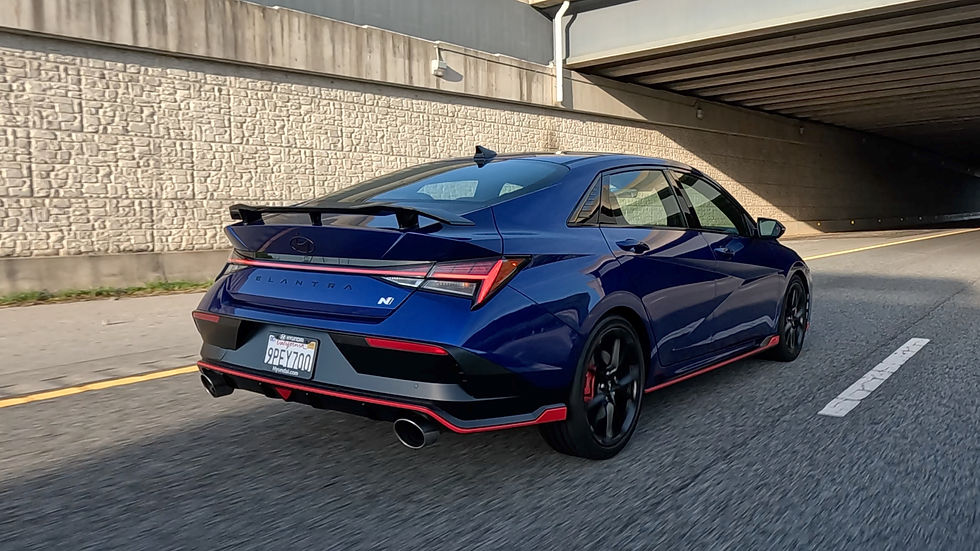
One other key change for the refresh was the new black 19” forged wheels. While not as stylish as the polished wheels on the OG Elantra N, they’re now forged, which reduces rotational mass, a key element of performance. Subtle changes like this underscore Hyundai’s new commitment to performance with the N brand – if they were just pretending, the flashy older wheels would have done just fine, but “fine” isn’t good enough. The overall look still remains largely boy racer, with the three-post rear wing, oversized exhaust tips and flashy red trim, but in this segment you don’t want to be the understated Golf R, you want some flash, and the Hyundai delivers.

Inside, the interior of the Elantra N is largely unchanged from the base car which it’s based on. That’s not a great thing – much of the interior is plastic fantastic, though Hyundai has attempted to class it up a bit with alcantara inserts in the door cards and the fabulous N Light sport seats, finished in leather and alcantara and complete with a little illuminated “N.” The seats are highly-supportive, but a bit tight for larger folks and only offer manual adjustment.
On the tech front, we have dual 10.25-inch screens, one for the gauge cluster and one for infotainment, both crisp and responsive. Bose sound provides the tunes though only through wired Android Auto and Apple CarPlay, which feels a bit dated. Dual zone climate control is standard as is heating for those swank N Light buckets and Hyundai also includes their Digital Key 2, which will allow drivers to use their phone as a key and share that digitally with friends or family. Interior space and cargo volume are unchanged, but the Elantra N adds a red rear chassis brace that slightly obstructs the pass-through when the rear seats are folded.
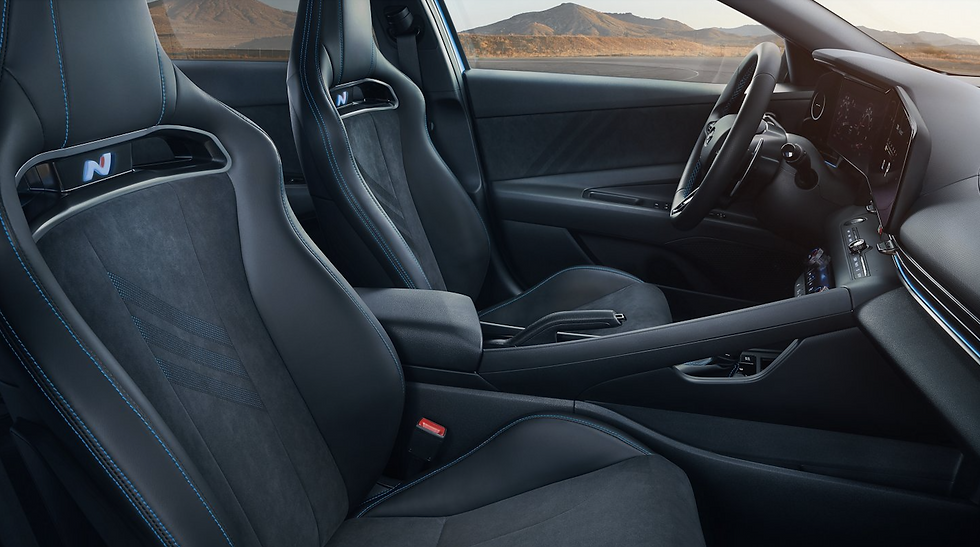
Modern sports cars have started to blend technology and performance, and the Elantra N is no different as it offers Eco, Normal, Sport, N modes which tailor settings for engine response, exhaust sound, suspension damping and steering into four distinct experiences. N Custom mode is also available allowing the driver to tailor the settings to their personal preferences, which quickly became one of our favorites as we could dial in the softer suspension settings while keeping everything else on the razor’s edge in Sport+. Regardless of setting, the adaptive dampers are marvelous – when dialed fully up to Sport+, they’re extremely firm, honestly too firm for anything more than glassy asphalt, which you’ll likely only find on your favorite track. Keeping them toned down to Normal or Sport are most ideal for driving on public roads, but we love the fact that Hyundai included a setting that’s at home on a track.
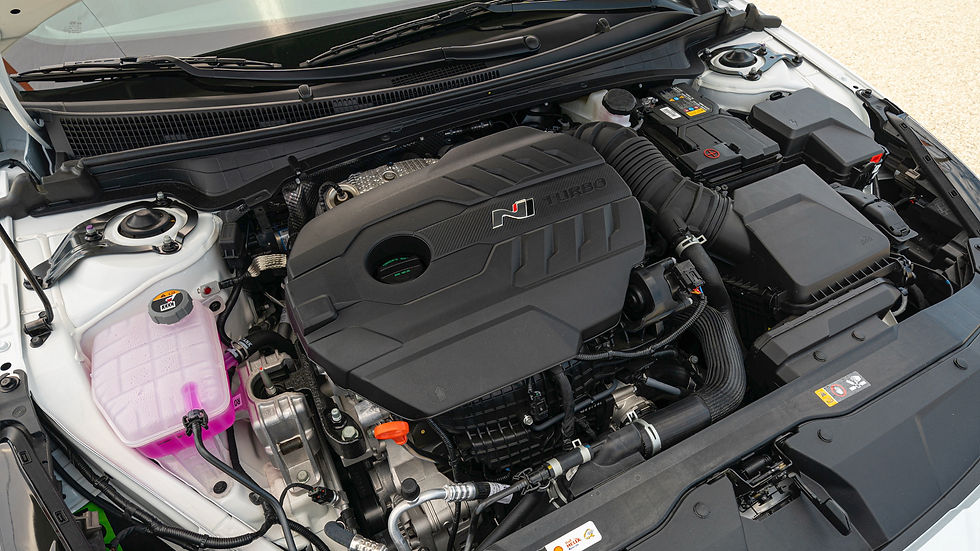
Another marriage of performance and technology is the NGS button, which is N-speak for N Grin Shift, which provides 20 seconds of overboost and sharper shifts on cars equipped with the DCT, like our tester. The Elantra N makes 276 hp and 289 lbft out of its 2.0L turbo four, but with a press of the NGS button, you’ll add an extra 10 for a total of 286 hp. Power is sent to the ground through the front wheels via either a six-speed manual, or our tester’s wet clutch 8-speed DCT, which is a $1500 option. I’d love to tell you that it’s as good as Porsche’s PDK or VW’s DSG, but it’s not. That’s not to say it’s bad, because it’s actually quite good, but it’s a solid step behind the standard-bearers.
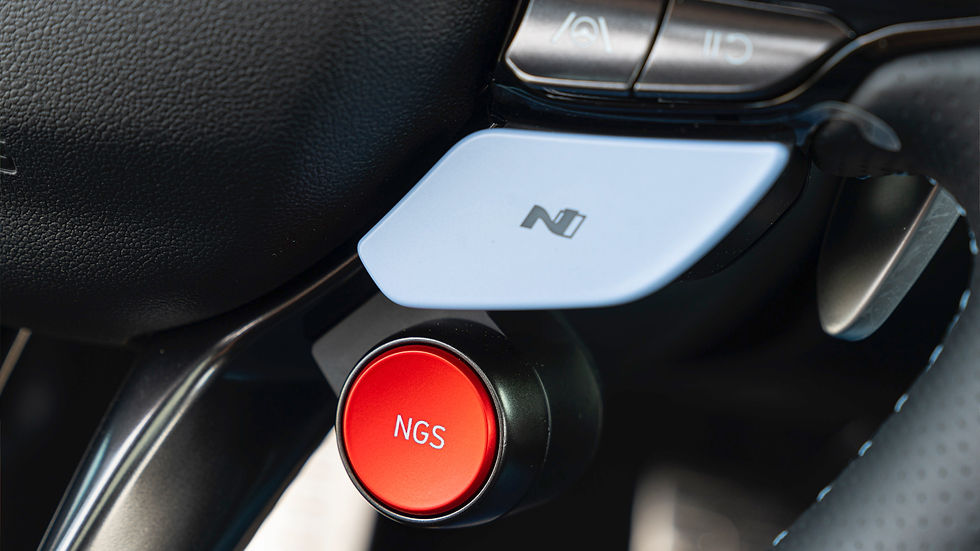
When so equipped, the Elantra N can sprint to 60mph in less than five seconds and on through the quarter mile in 13.7 seconds at 104mph. That’s properly quick and will even show the far more expensive Civic Type R its creased derriere at the drag strip. Acce
leration is great, but where the Elantra N truly shines is handling – the chassis is so composed and well-engineered that you can make a front wheel drive car rotate through a turn and still somehow manage to put power down on corner exit. The wizardly behind this is largely in Hyundai’s N Corner Carving eLSD, but also in the chassis tuning and fabulous adaptive dampers. Steering weights up nicely and the Elantra N turns in with an immediacy that you just want to replicate over and over again. Despite the electric rack and its corresponding lack of traditional feel, the car still somehow clearly conveys what each of the front tires are doing.

Many automakers will outsource development of their performance brakes to experts like Brembo, Baer, Alcon or Wilwood, but not Hyundai. The mad scientists down at the N skunkworks developed a bespoke braking package for the Elantra N which has the best pedal feel short of a Porsche GT3. That’s because braking isn’t managed by pedal travel like in a minivan, but is governed by pedal pressure, like in a race car.
The performance of the Elantra N manages to both be approachable and addictive – it’s easy to find the car’s limit and the eagerness of the chassis goads you into pushing it even when zipping around town running errands. The magic of the Elantra N is that it offers all of that, in a useful sedan wrapper, for only $34,350, topping out around $37,000 like our tester. That’s Type R level performance with $10k in the trunk. Buy it, take it to the track and use that savings on HPDEs, tires and brakes and ignore the shortcomings. Cars like this won’t be around forever and the time to scoop one up is now.


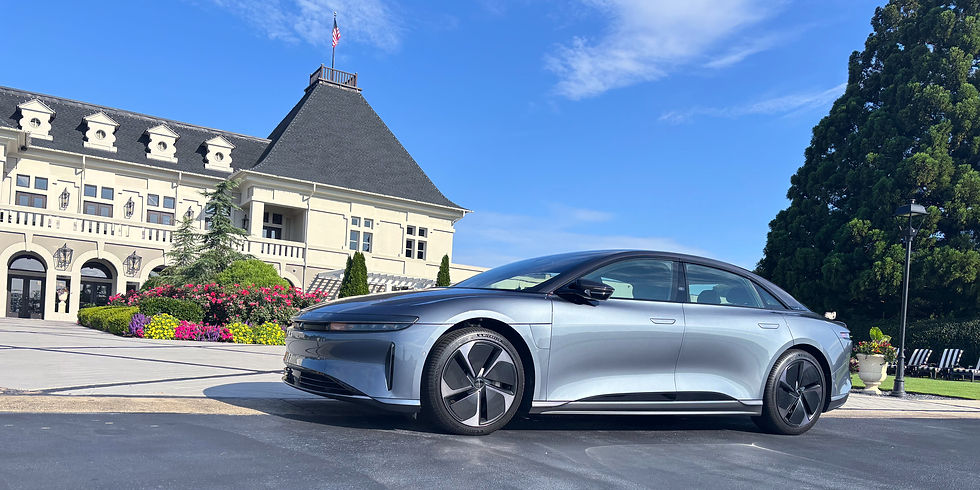

Comments